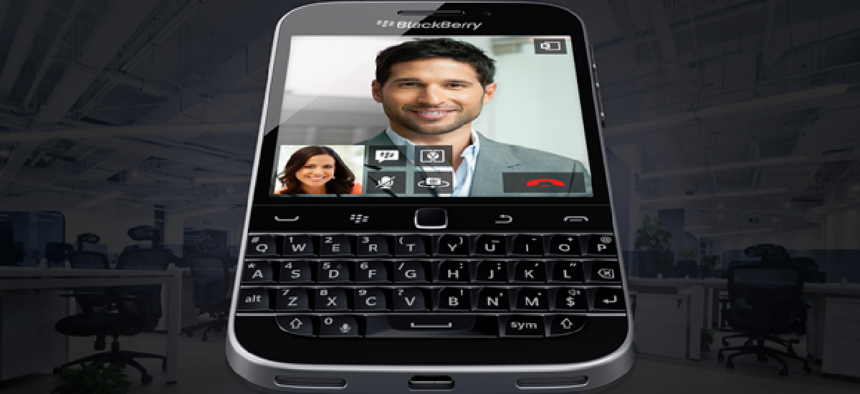Can BlackBerry Classic power a comeback?


Connecting state and local government leaders
BlackBerry Classic returns to the old form factor and includes BlackBerry Balance, the technology that allows personal and work data to reside in separate partitions on the device.
It feels a little bit like Roger Federer trying to regain his dominance on the tennis courts by going back to the racket he used early in his career.
Will BlackBerry do better with this week’s release of BlackBerry Classic? For existing BlackBerry users, the answer is a resounding yes, as pre-ordered handsets are now sold out in the United States.
BlackBerry Classic represents a return to the old form factor of the BlackBerry Bold. Apparently, BlackBerry got a lot of feedback from its users that they wanted the navigation bar back above the hardware QWERTY keyboard. It’s back. In addition to a scroll button in the middle, users can with a single push launch a phone call, summon the device menu, go back a step and end a call.
BlackBerry Classic will, in short, feel very familiar to users of the BlackBerry Bold – with one very significant difference. BlackBerry Classic runs on OS 10.
OS 10 was first released in early 2013 for a very limited set of devices. With its extensive support for gestures and touches for navigation, OS 10 was really designed to eliminate the need for a physical keyboard.
At the same time, OS 10 delivered a host of other enhancements, including the ability to run Android apps and, especially important for government users, BlackBerry Balance, which allows personal and work data to reside in separate partitions on the device.
Now, with BlackBerry Classic, users will be able to return to the convenience of a hardware keyboard without losing the advantages of OS 10. And, in fact, the 10.3 version that will be delivered with the BlackBerry Classic adds a couple of new tools. BlackBerry Blend is designed to make it easy to share data seamlessly with other devices, including a desktop computer, and a new BlackBerry Assistant uses voice commands or text to help with a wide array of tasks.
While BlackBerry Classic will be a welcome option for many existing BlackBerry users, the critical question for BlackBerry is whether the new device can win over new users.
Ken Dulaney, Gartner vice president for mobile devices, is skeptical. “There’s a large keyboard-centric population out there and they may attract that,” Dulaney said. “The question is whether that’s large enough.”
Dulaney notes that the overwhelming majority of users have come to favor full-screen devices that rely on the touch screen for the majority of navigation and control commands. “There are a couple of reasons for that,” said Dulaney. “First of all, people do far more browsing than they did in the past and they want a larger screen. The second thing is that the larger screens and on-screen keyboards permit people to type just as fast as with a keyboard. That’s whittled down the demand for keyboards tremendously.”
While the BlackBerry keyboard is no longer the same draw it once was, so has BlackBerry’s edge in security been eroded somewhat.
“There’s no question the BlackBerry has an edge in security,” said Dulaney. “But some of that is been mitigated by improvements in other mobile device products.”
Dulaney says that his team has been recommending to clients for over a year that, due to BlackBerry’s uncertain future, they need to have a mobile device management solution that can support devices by other manufacturers. “Most of them did that,” he said. “And now that they’re able to support other devices, they seem to see that they meet their security needs. I haven’t had anybody calling me saying that they’ve had a breach from these other products.”
So, the question looming for BlackBerry is whether there are enough people in the market who need keyboards—and who also have security requirements beyond those provided by other devices—to make a big enough market to keep BlackBerry in the hardware business.
According to Dulaney, Gartner forecasts that BlackBerry will sell 5 million units in 2015. “That is under 1 percent of the smartphone market,” he noted.




